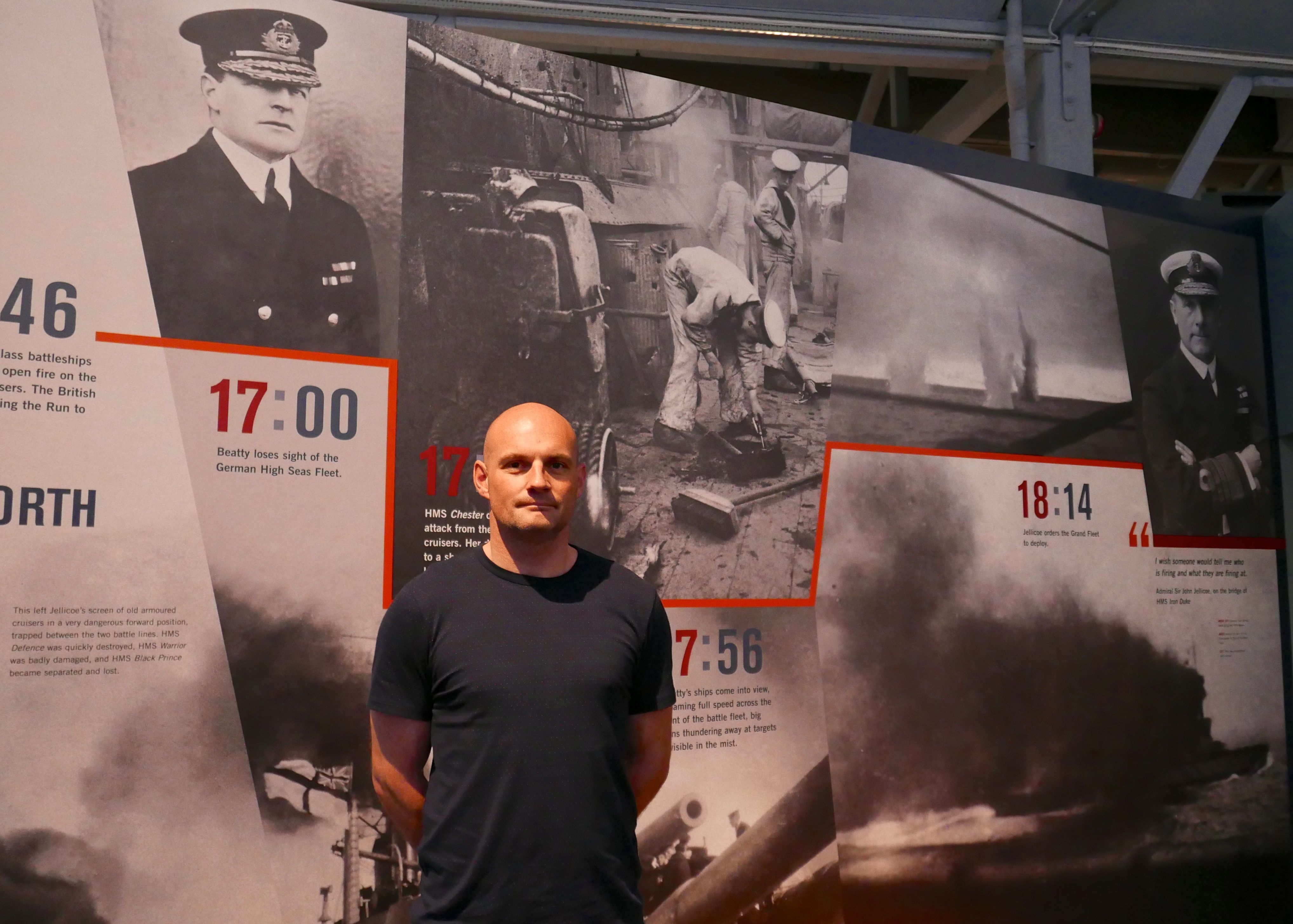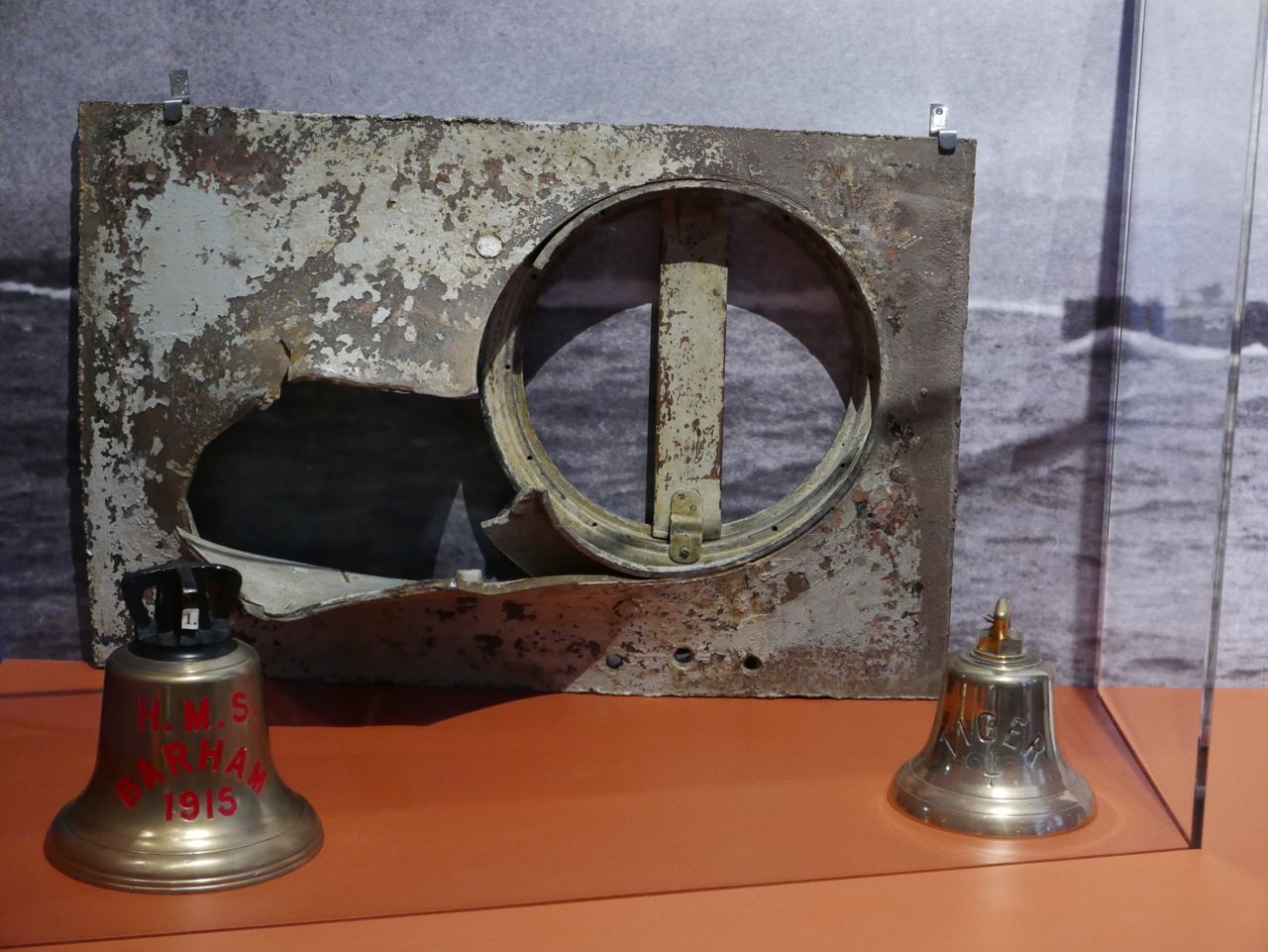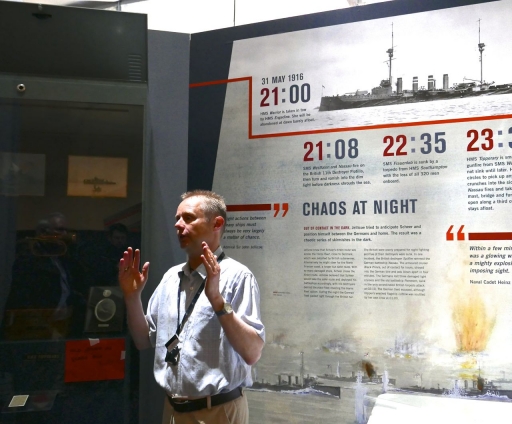Britain’s Royal Navy Museum has opened its major exhibition devoted to the Centenary of the Battle of the Jutland.
Centenary News visited the Portsmouth Historic Dockyard site amid intensive preparations for an event that doesn’t shy away from lingering controversy over the outcome of the biggest sea battle of the First World War.
The exhibition title is unambiguous: ’36 Hours: Jutland 1916, The Battle that Won the War’.
Britain lost more ships and men than the German High Seas Fleet in the clashes off the Danish coast on May 31st/June 1st 1916.
Germany immediately proclaimed victory, while recriminations followed in Britain over the conduct of the battle by Admirals Sir John Jellicoe and Sir David Beatty.
But Nick Hewitt, Head of Heritage Development at the National Museum of the Royal Navy (NMRN), argues that the battle was misrepresented at the time, and has been misunderstood ever since.
“We are making the case really strongly that it was the battle that won the war. The reason is it allowed the maintenance of the blockade of Germany and the blockade was eventually instrumental in causing Germany to fall apart at the end of the war.
“It’s not a clean victory. It’s not a brilliant victory. It’s a messy, clumsily fought battle but it is still a victory. The emphasis was on the Germans changing the status quo and they did not do that.”
 Toby Read, whose grandfather Ernest Read was killed on HMS Invincible, at the NMRN exhibition (Photo: Centenary News)
Toby Read, whose grandfather Ernest Read was killed on HMS Invincible, at the NMRN exhibition (Photo: Centenary News)
A series of audio-visual presentations has been designed to explore key moments of the battle, including the German side of the story.
These are complemented with exhibits drawn not only from museum collections, but also contributed by the Jellicoe and Beatty families, and descendants of Admiral Reinhard Scheer, Commander of Germany’s High Seas Fleet.
They include Kaiser Wilhelm’s telegram of congratulations to Scheer, and his citation for Pour Le Mérite, one of Germany’s highest military honours.
Yet it was Scheer, after his experiences at Jutland, who recommended the resumption of unrestricted submarine warfare to beat Britain, with consequences that would provoke America’s entry into the Great War in 1917.
Royal veteran
A large deck gun from the German destroyer SMS B98 and smaller guns from British counterparts HMS Narborough and HMS Opal, lent by Orkney Islands Council from Scapa Flow Visitor Centre and Museum, have been restored for the exhibition.
NMRN has also worked in partnership with Imperial War Museums (IWM), whose contributions include a letter written by a royal veteran of Jutland, publicly displayed here for the first time.
Prince Albert (the future King George VI), who saw action on the Dreadnought HMS Collingwood, wrote: ‘It was a great experience to have gone through and one not easily forgotten. How and why we were not hit or damaged beats me, as we were being fired at a good part of the time.”
 A shell damaged section of HMS Barham (Photo: Centenary News)
A shell damaged section of HMS Barham (Photo: Centenary News)
NMRN’s Nick Hewitt says: “We’re doing all we can to get across the scale of Jutland.”
“If there is one thing to take away it is that scale. There were 250 ships at sea -that’s more than all of Europe’s navies combined today.
“I would make a case to say it’s the greatest sea battle in history. It’s hard to imagine now that number of men (105,000) and ships at sea.”
Professor Dominic Tweddle, Director General of the NMRN, comments: “One hundred years after the fleets of the Imperial German and Royal Navies fought the defining naval battle of the First World War, it is essential that we mark and commemorate the incredible sacrifice made.
“Jutland’s significance in turning the tide of the First World War must not be underestimated. We are proud to be able to tell its story.”
’36 Hours: Jutland 1916, The Battle that Won the War’ opened at the National Museum of the Royal Navy, Portsmouth Historic Dockyard, on May 19th. More information can be found here.
Centenary News Editor Peter Alhadeff visited NMRN for this report
Images: Centenary News
